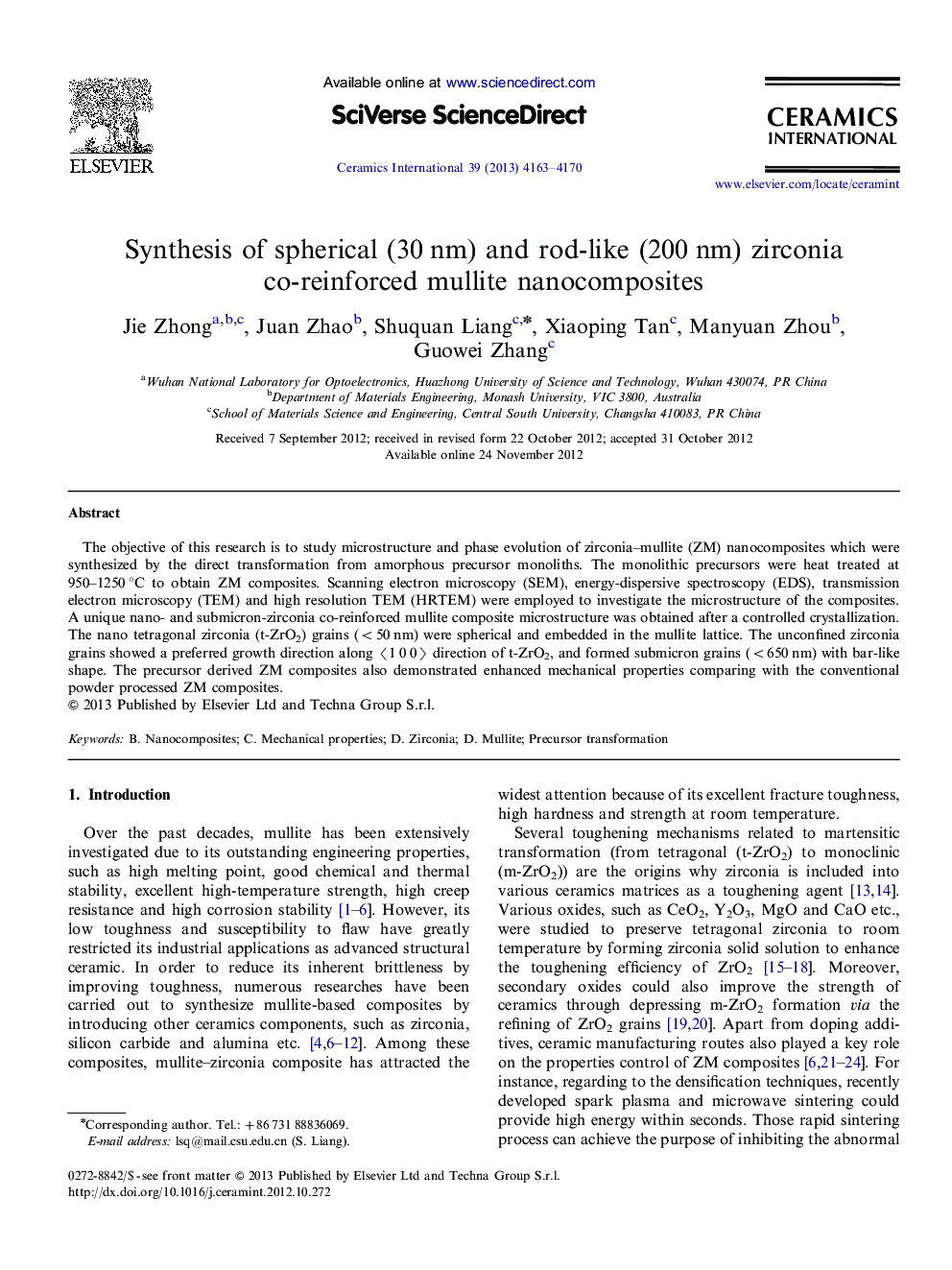| Article ID | Journal | Published Year | Pages | File Type |
|---|---|---|---|---|
| 1461793 | Ceramics International | 2013 | 8 Pages |
The objective of this research is to study microstructure and phase evolution of zirconia–mullite (ZM) nanocomposites which were synthesized by the direct transformation from amorphous precursor monoliths. The monolithic precursors were heat treated at 950–1250 °C to obtain ZM composites. Scanning electron microscopy (SEM), energy-dispersive spectroscopy (EDS), transmission electron microscopy (TEM) and high resolution TEM (HRTEM) were employed to investigate the microstructure of the composites. A unique nano- and submicron-zirconia co-reinforced mullite composite microstructure was obtained after a controlled crystallization. The nano tetragonal zirconia (t-ZrO2) grains (<50 nm) were spherical and embedded in the mullite lattice. The unconfined zirconia grains showed a preferred growth direction along 〈1 0 0〉 direction of t-ZrO2, and formed submicron grains (<650 nm) with bar-like shape. The precursor derived ZM composites also demonstrated enhanced mechanical properties comparing with the conventional powder processed ZM composites.
